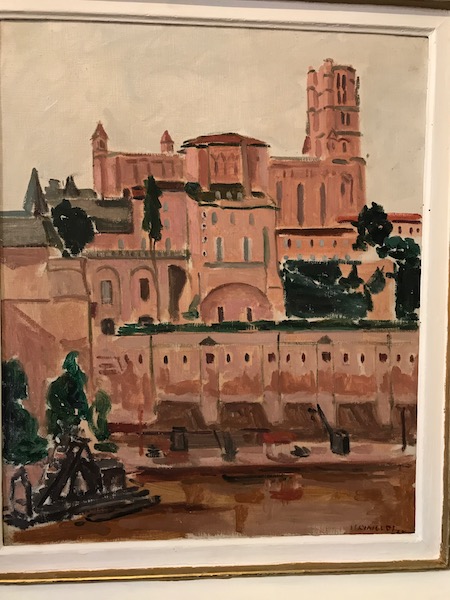Our Blog - Albi: Palais de la Berbie (Bishops Palace) and Toulouse-Lautrec Museum
This blog will actually have 2 parts: the Palais de la Berbie (Bishops Palace) and the Toulouse-Lautrec Museum, which is housed in the palace. The palace was finished at the end of the 12th century making it even older than the Palais des Papes in Avignon.
A bit of history ... back in the 5th century, you have the first Bishop of Albi when the town was first started. Until the beginning of the 13th century, the Bishop lived close to the cathedral in houses lent by the canons. In the early 13th century, the Bishop at the time, Bishop Durand de Beaucaire, was living near the cathedral, which at that time was a Romanesque stone cathedral. During the Albigensian crusades (yea, the same crusades), the Bishops took advantage of the fall of the viscounts in Albi and began collecting the taxes for themselves. With this sudden wealth, Bishop Durand decided that he should have a new residence to showcase his power (wealth equaled power).
Between 1228 and 1271, construction and additions to the palace took place until it had an imposing brick keep flanked by four towers, a second keep, and a vast rectangular wing (the Suffragans’ wing) with massive walls, housing the Chapelle Notre-Dame. By 1271, it looked more like a fortress than a palace, which was meant to clearly indicate the Bishop’s power over the town. To ensure his safety from uprisings from the population of the town, the city-side was much more sophisticated than on the other side, which bordered on the Tarn river, forming a natural rampart.
Additional work on the palace was done by Bishop Bernard de Castanet between 1277 and 1306, in parallel with the building of the new Cathedral of Sainte-Cecile next door. The massive size and fortress-look of the exterior of the Cathedral was also meant to show power. The palace and cathedral together made up the Cité Episcopale, which was later walled to defend the bishop, who became unpopular.
Starting in the 15th century, the Palace lost most of its defensive features and became more of a luxury palace and Louis d'Amboise introduced Renaissance style into the palace with the inclusion of large Renaissance windows. The parade ground was turned into a fashionable classical garden and most, but not all, of the fortifications were demolished on the order of the military Governor of Albi.
These are a set of pictures of the exterior, which attempts to show the palace and it's various sections. This first one does a good job of showing the more "fortress" views. As you walk into that main entry, you go into the courtyard or Your d'Honneur. On one end (the one you can see) is the Tour Saint-Michel, which is part of the original structure.
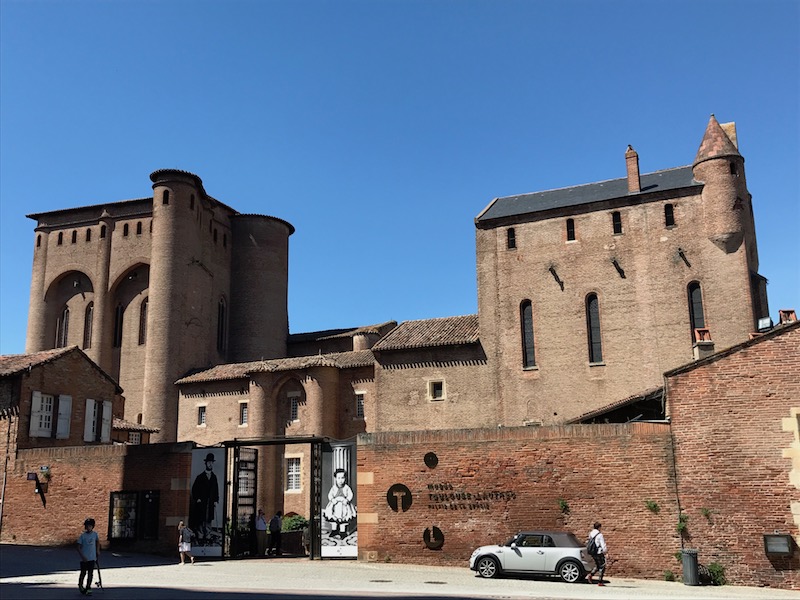
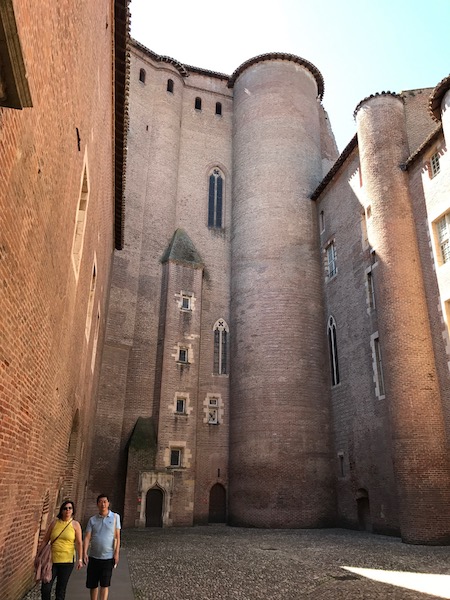
The writing here says "Berbis", which is the old word for "Berbie" or "Bishop"

Between the various fortress-like towers are more normal-looking buildings for the palace.
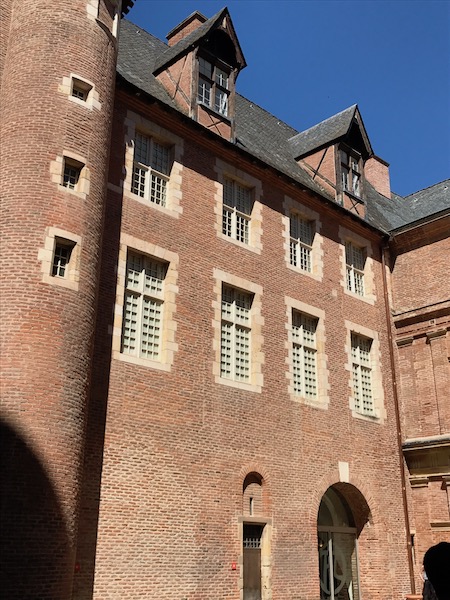
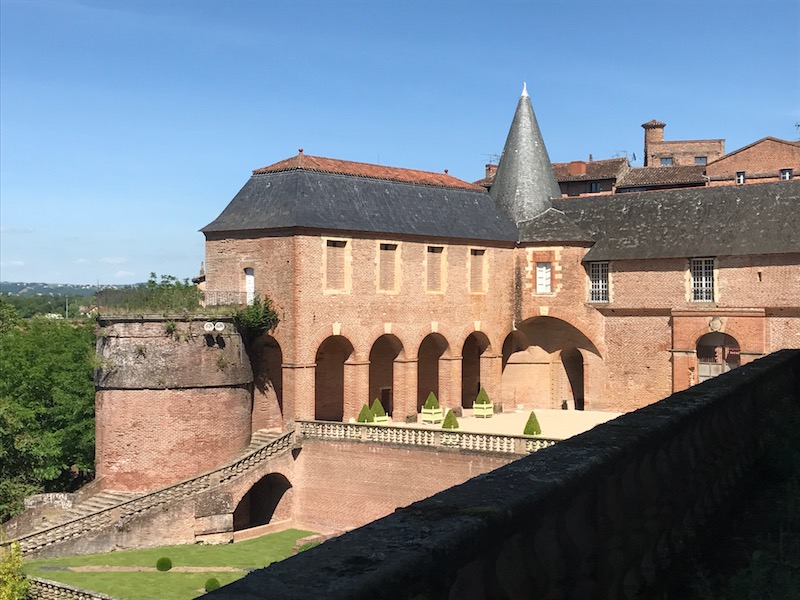
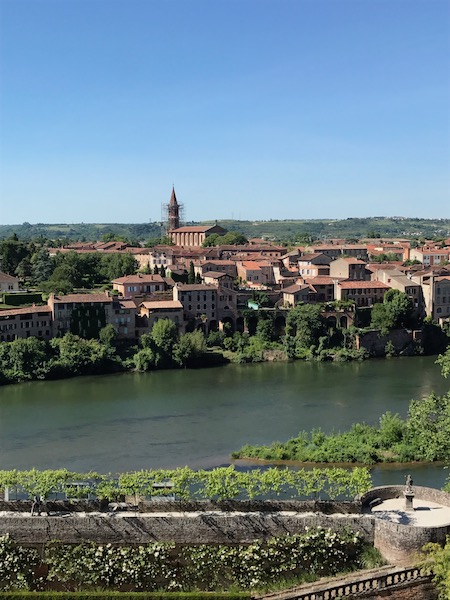
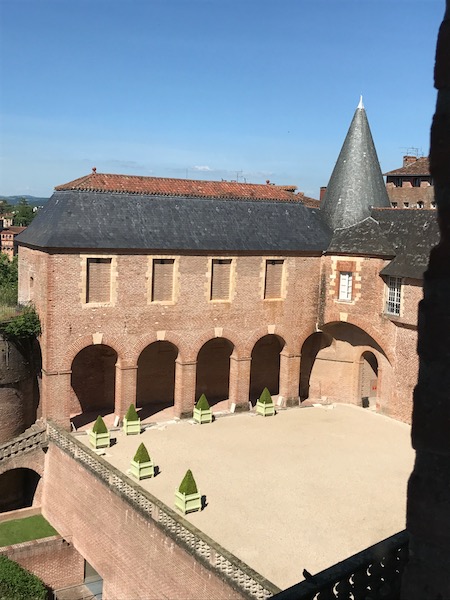
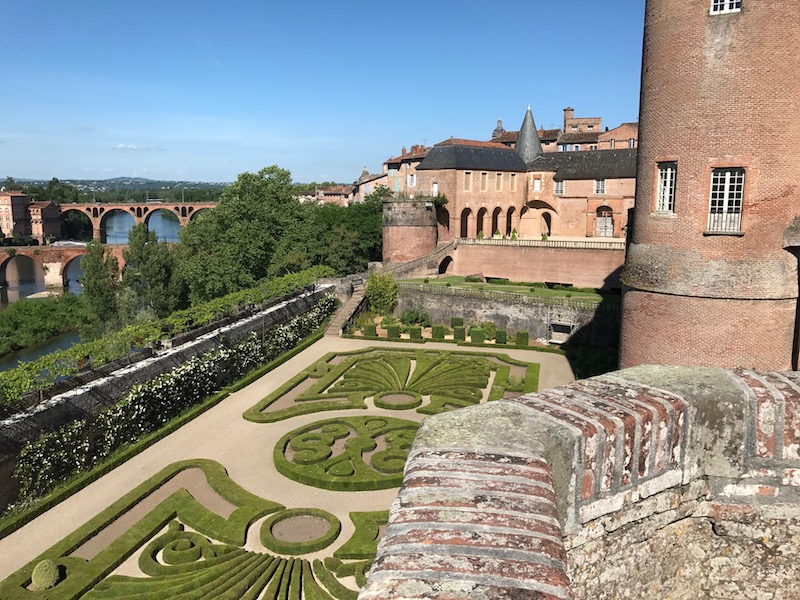
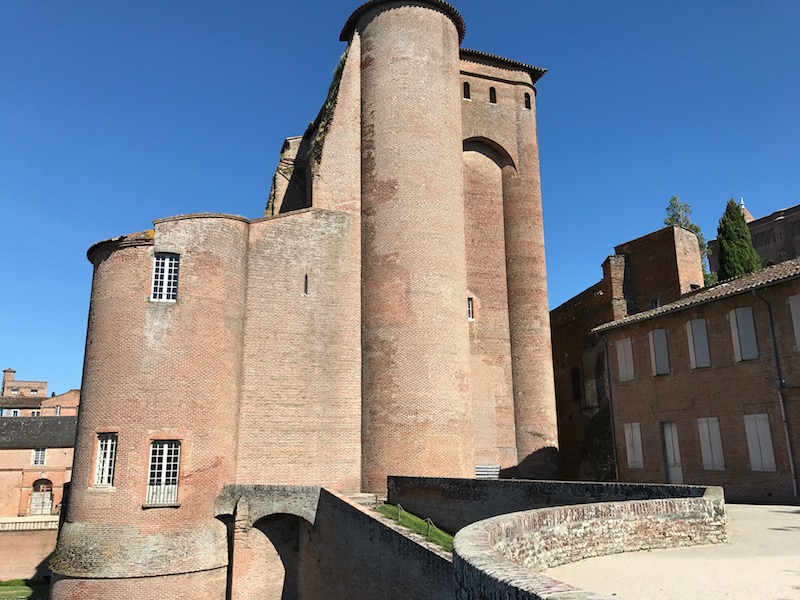

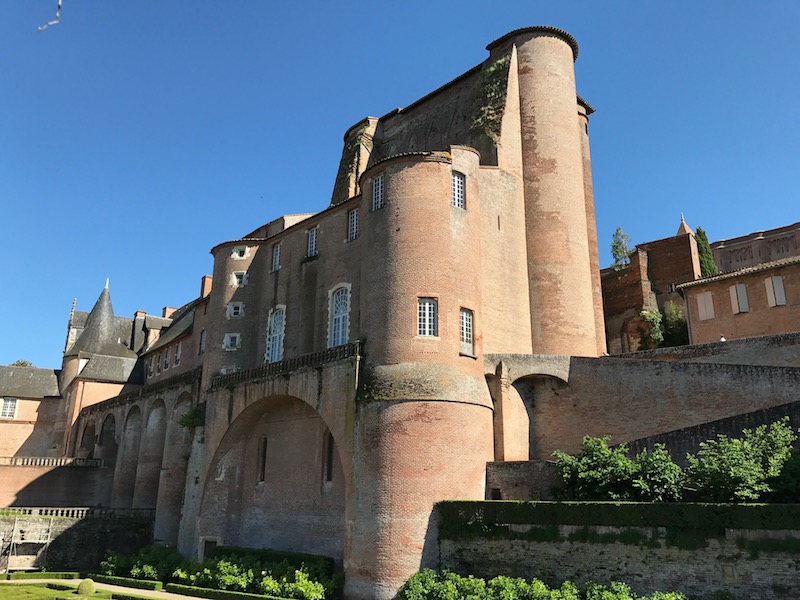


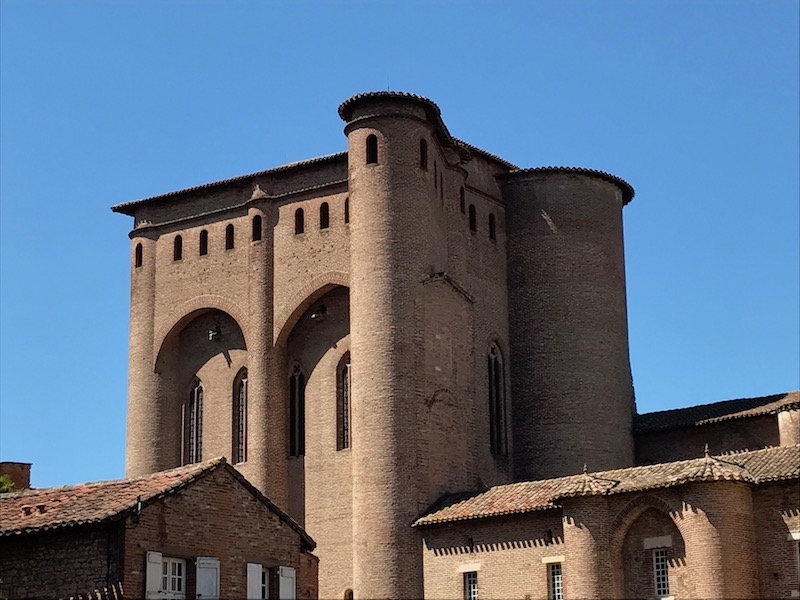

I didn't take very many pictures of the interior, since it wasn't really setup properly to see the interior. In many cases, the interesting architecture parts were covered up to properly showcase the artwork in the museum. However, I did grab some that show the ribbed brick vaulted ceilings.
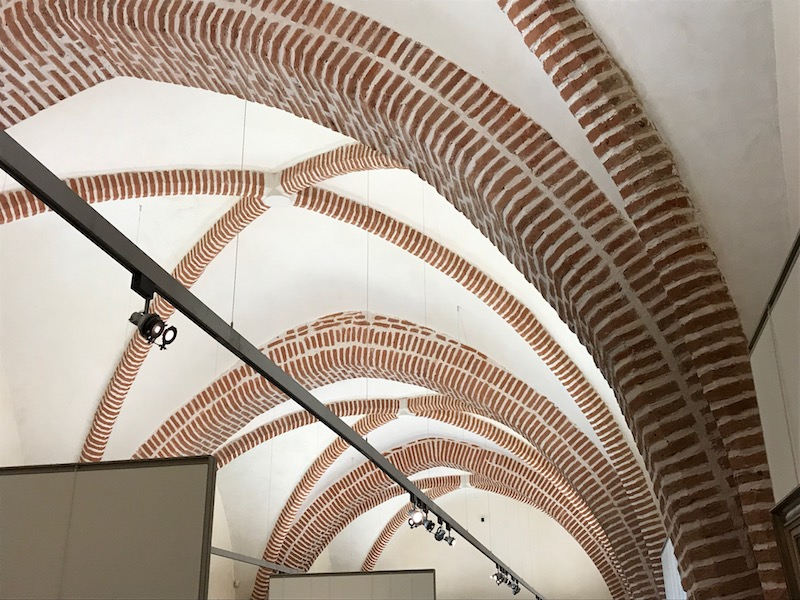

And then, trying to get Tom in front of this old (and short) door.
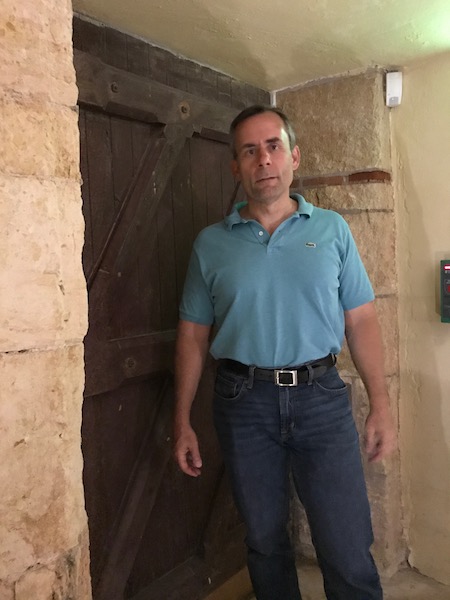
This room was really nice, with very very tall vaulted ceilings. It showcased the floor, which was an original tile/mosaic floor.

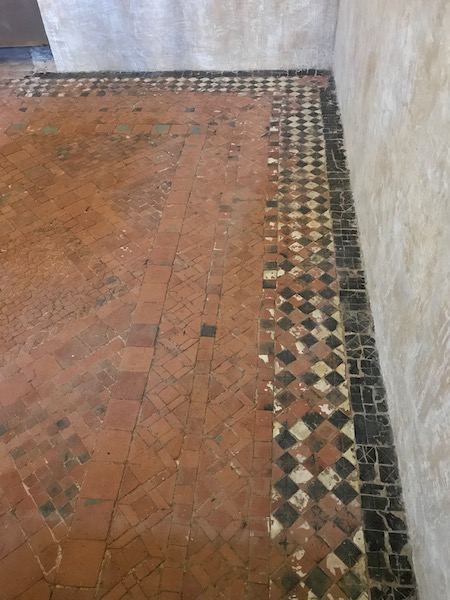
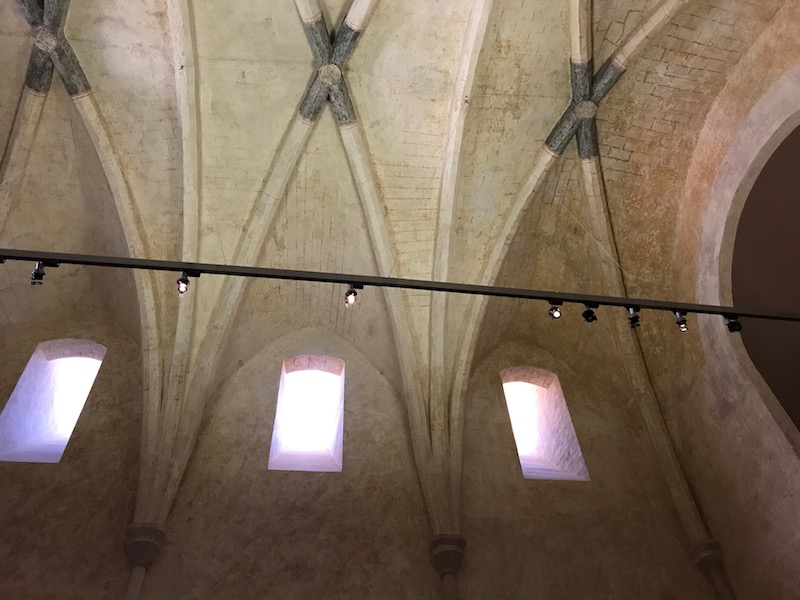
This lovely room was part of the Renaissance style that was added by Louis d'Amboise when he changed it from a fortress to the luxury palace.
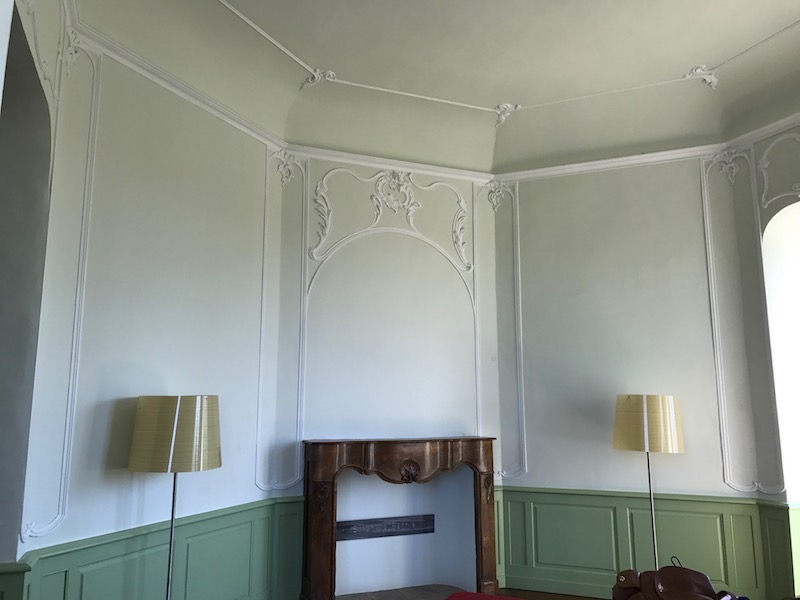
These next two pictures, in one section of the palace the ceilings were all these wood ceilings with highly painted beams. I didn't do a great job at getting very many pictures, and these two are the best that came out.

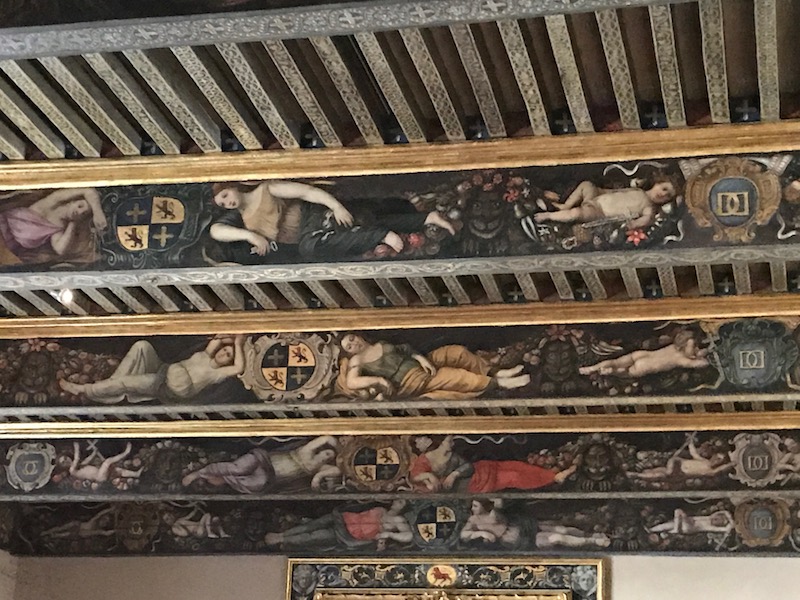
Tom showing one of the long, brick hallways with the arched passages.
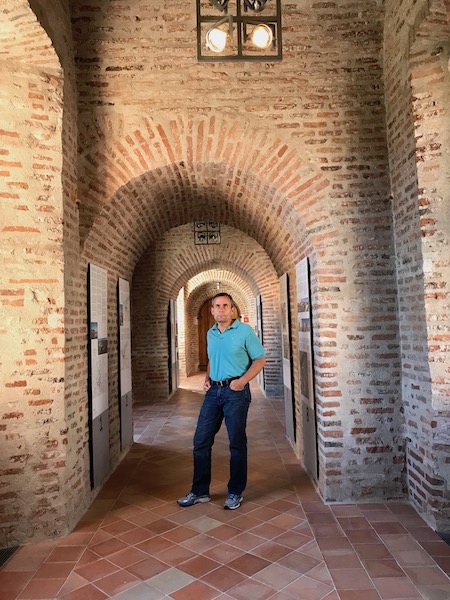
The gardens were added between 1678 and 1687 by Hyacinthe Serroni, who was an Italian Catholic priest that became the first Archbishop of Albi in 1676. The terraces and flower-beds are laid out very much in a French style, with stone steps and long noble balustrades bearing coats of arms. Antique-style statues representing the seasons were added in the 18th century by Cardinal de Bernis. You an see that the gardens do not have high walls on the river-side, since the river naturally protected that side.
We did just a bunch of pictures that show the gardens from various angles, as well as some with the river. Note that we were not able to get down to the actual garden as it was blocked off ... we could only walk around a walkway at the top on 2 sides.
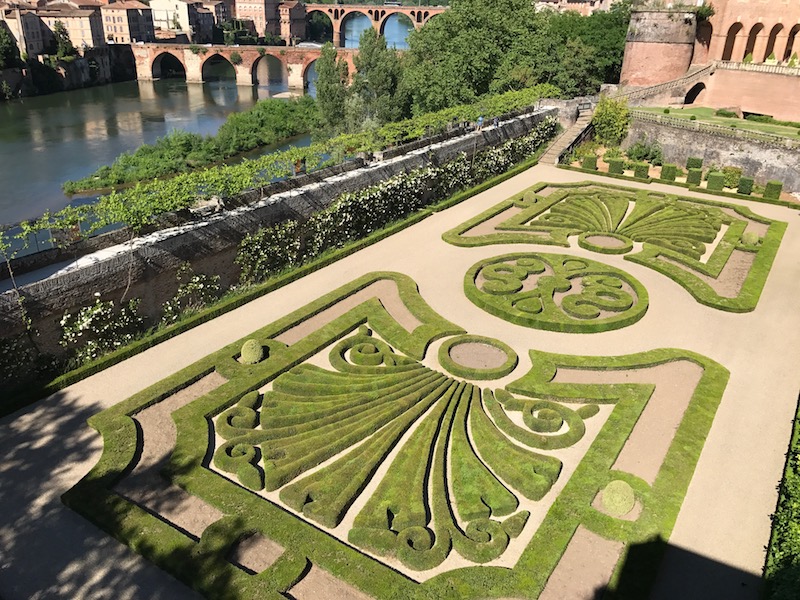
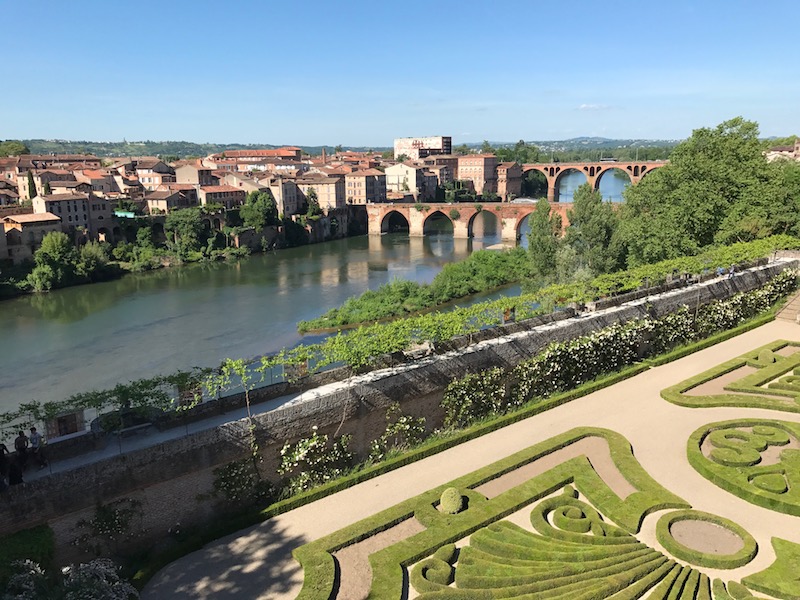
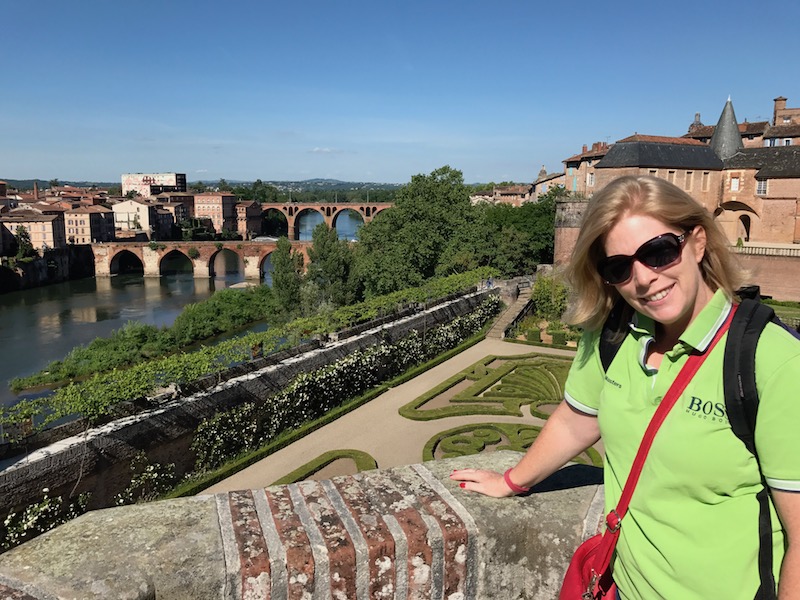

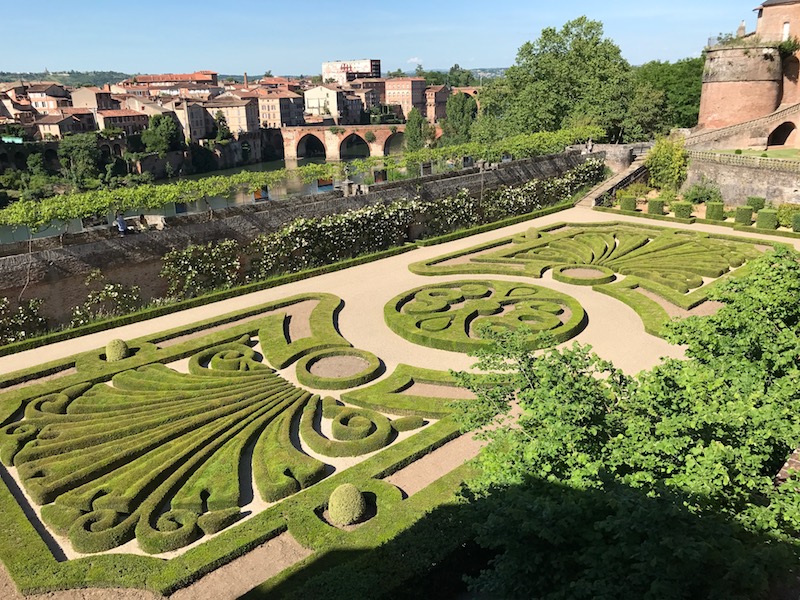


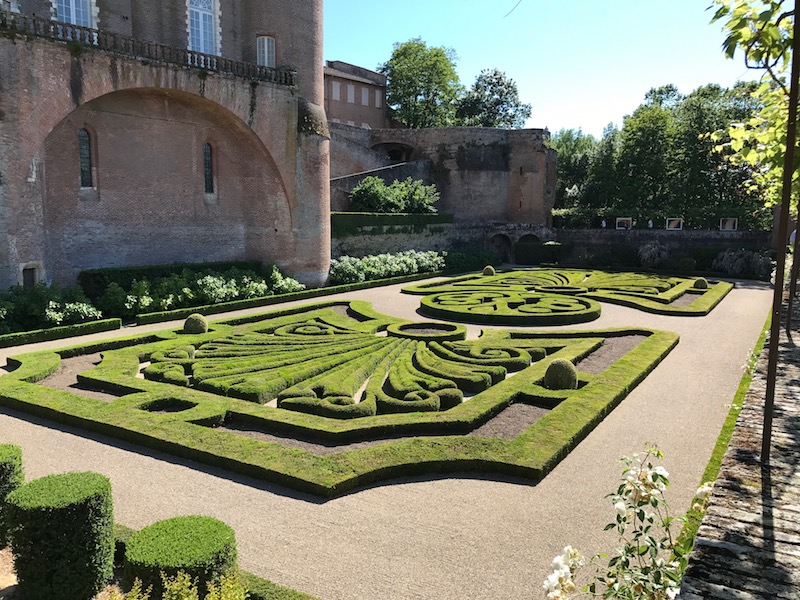

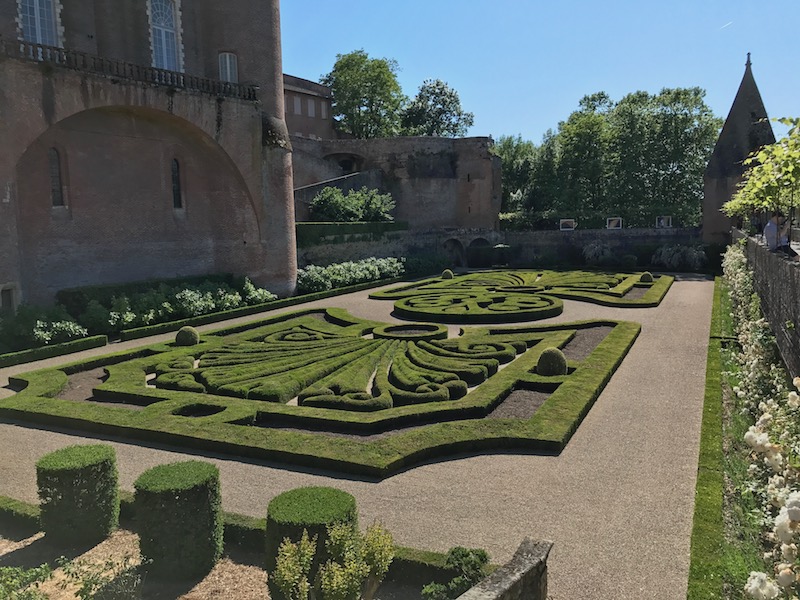
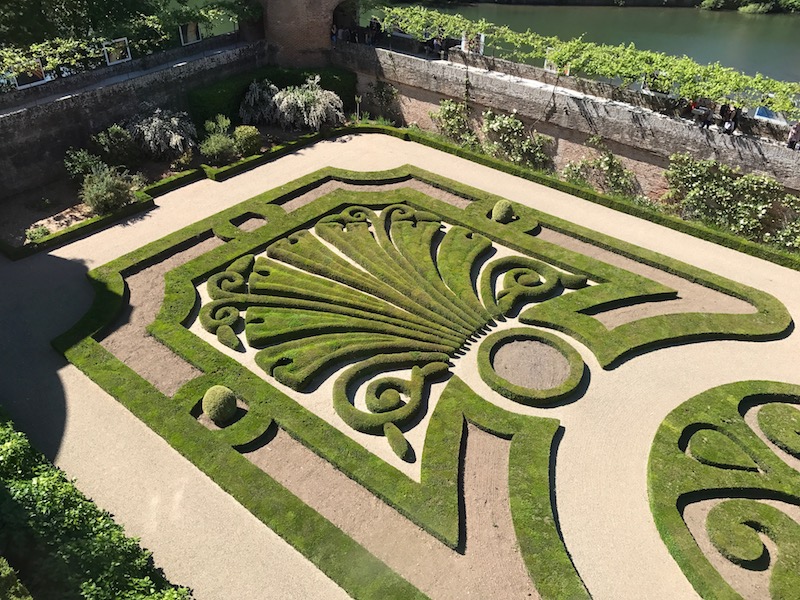
The palace is home to the Toulouse-Lautrec Museum. More than 1000 works, are showcased here, making it the largest public collection in the world devoted to the artist. He is among the best-known painters of the Post-Impressionist period, whose immersion in the colorful and theatrical life of Paris in the late 19th century allowed him to produce a collection of enticing, elegant and provocative images of the modern (sometimes decadent) life of those times. He lived a short but lively life :-). He was born in Albi in an aristocratic family (well, in fact, 3 different aristocratic families). His parents separated when he was about 4 after the death of his little brother and after living with a nanny for a few years, he moved to Paris to live with his mother when he was 8. His art talent was recognized fairly early and he studied with several different teachers in his youth.
He ended up having lots of time to work on his art as he was a fairly unhealthy child, suffering from several congenital health conditions including a genetic bone disorder (due to a family history of inbreeding within these 3 aristocratic families, including his parents who were first cousins). He broke both legs at ages 13 and 14, which never healed properly, and then his legs just stopped growing, leaving him as an extremely short adult. His issues continued as an adult and he struggled with alcoholism. He also contracted syphilis (most likely from one of the prostitutes that was the subject of several of his paintings), which (in addition to his alcoholism) contributed to his early death at just 36.
I only took a couple pictures of his paintings. This first one is from 1882, so he was just 18. It is Adèle de Toulouse-Lautrec, his mother, who was the subject of several of his paintings.

I put these next two together. Both were done in 1881 at age 17, and both have horses as the subject. However, you can see that they are in two really different styles .. the first is much more realistic and the second more on the impressionist side.
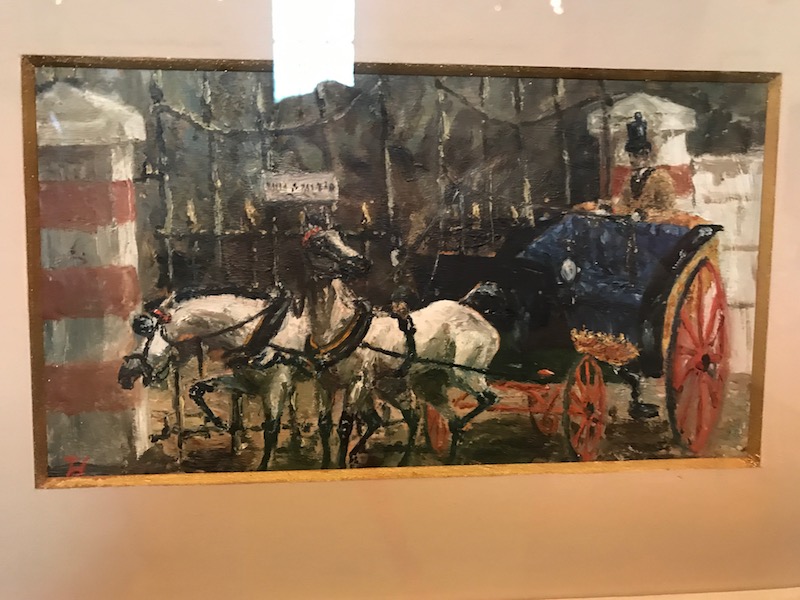

These are from 1901, so the last year of his life. The first was supposedly a "test", using oil on cardboard, for the second work done (also in 1901, oil on canvas) entitled "Un examen á la Faculté de Médecine". In the first one, you see Robert Wurtz seated facing right whereas in the second he is now facing left and is dressed differently. This one is an imaginary reconstruction of the thesis defense of Lautrec's cousin, Gabriel Tapié of Céleyran.
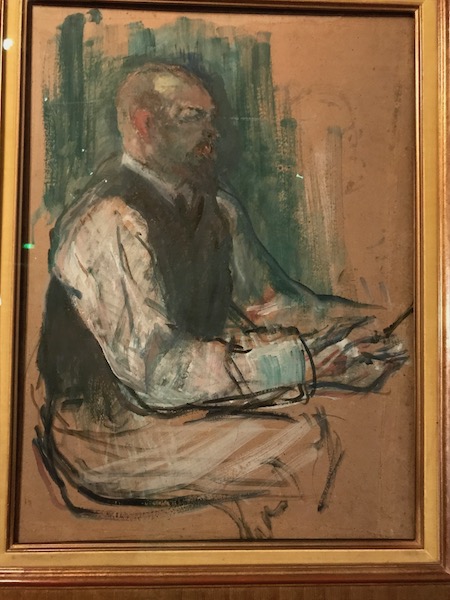

This one actually isn't from Toulouse-Lautrec, but instead, Jules Cavailles and is a painting of the Palais de la Berbie and the Cathedral Sainte-Cecile in 1935.
